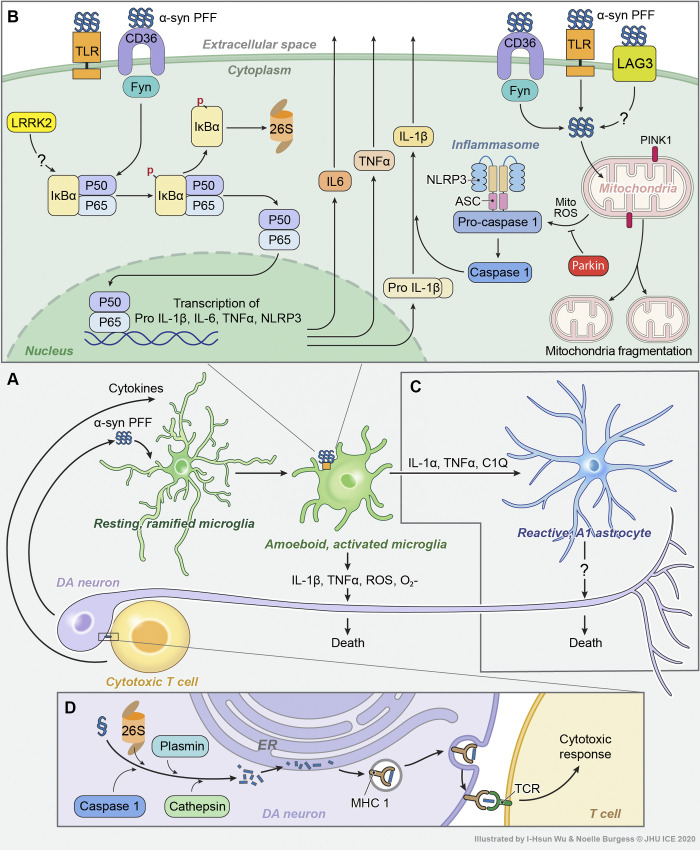Figure 4.
Non-autonomous signaling pathways in PD. (A) Hyperactivated microglia, reactive A1 astrocytes, and cytotoxic T cells can independently or cooperatively act to mediate DA neuron death in PD. (B) α-Syn oligomers or aggregates released from dysfunctional DA neurons can activate the NF-κB pathway in microglia. LRRK2 may play a role in this process. This results in a pro-inflammatory cytokine response. Endocytosed α-syn oligomers or PFFs can also mediate mitochondrial dysfunction, resulting in the production of mitochondria-derived reactive oxygen species (mitoROS), which activates the NLRP3 inflammasome, resulting in IL-1β processing and secretion. Microglia-released pro-inflammatory cytokines and ROSs can directly elicit DA neuron death. Parkin/PINK1 signaling dampens inflammasome activation by preventing mitoROS release. (C) Activated microglia can produce IL-1α, TNF-α, and C1Q to elicit the formation of reactive A1 astrocytes, which directly kill neurons via an unknown mechanism. (D) Aberrant auto-processing of α-syn in DA neurons can result in the generation of α-syn antigenic epitopes, which, when presented by MHC class I molecules, can drive autoimmune cytotoxic T cell responses that result in DA neuron death.

